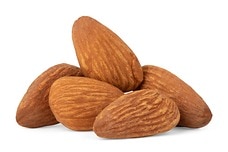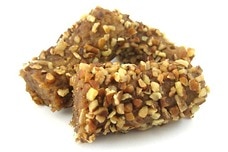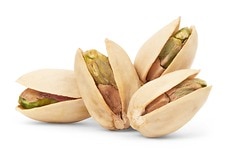5 Similarities Between Popular Diets
It seems that every other week, there is a new “hot diet” being promoted by a Hollywood celebrity or self-proclaimed nutrition expert. The words “revolutionary,” “fat-burning,” and “transformative” have become almost meaningless in the diet world because of their wide application to a number of disparate diet plans. Despite the major differences in the foods allowed and the rationale provided for many popular diets, effective diet plans tend to have more commonalities than differences. Exploring these similarities and the efficacy of specific diet plans can help you make informed decisions about what to eat.
The following list explores the most ubiquitous similarities amongst successful diet plans. Discover how these concepts are incorporated into a healthy lifestyle and how they might contribute to your health goals.
1. Overall Restriction of Calories
When it comes to weight control, things eventually come down to a simple formula: calories in versus calories out. Although the specific ways of getting to this place -- reduce fat, reduce carbohydrates, eat more protein, cut out all dairy products -- vary widely, all successful diet plans lead to a reduction in your caloric load. The reason for this is very straightforward.
A calorie is a unit of measurement that is used to denote how much energy can be derived from specific nutrients. Your body burns a certain number of calories at baseline, a term called your basal metabolic rate. Your basal metabolic rate refers to the number of calories needed to maintain your tissues, support your heart rate and respiration, and perform other basic activities (Mayo Clinic, 2014).
The foods you eat and the exercise you perform determine whether you will gain or lose weight. If you consume exactly the number of calories of your basal metabolic rate, you will neither gain nor lose weight. If you have a caloric surplus (e.g., your calorie consumption exceeds the number of calories you use), your body will store the extra energy as body fat, leading to weight gain. In contrast, if your calorie consumption is less than the number of calories you use, you will lose weight. One pound of body fat is equivalent to 3,500 calories (Mayo Clinic, 2015). Thus, creating a caloric deficit of 500 calories per day will cause you to lose one pound each week. This could come from exercising more to increase calorie expenditure or from eating fewer calories to restrict calorie consumption.
The vegetarian diet, DASH diet, South Beach diet, paleo diet, and many other popular diet plans require you to restrict certain groups of foods. Although the specific food groups vary by diet plan, the net effect is a reduction of your daily caloric intake. When paired with frequent physical exercise, this will help you lose weight.
2. Emphasis on Whole Foods
The average American diet includes a lot of processed foods. Although processed foods are not inherently unhealthy, they do tend to contain more saturated fat, calories, sodium, and sugar than their whole food alternatives. In a recent study, researchers found that Americans get 61% of their calories from highly processed foods (Oaklander, 2015). This is a large contributor to our country’s obesity problem.
In contrast, many popular diets emphasize eating fresh, whole foods. For example, the paleo diet requires adherents to eat fresh fruits and vegetables, nuts, seeds, eggs, and grass-fed meats (The Paleo Diet, 2015). All refined sugars and processed foods are out. Similarly, although people on the Atkins diet cut out nearly all carbohydrates -- which includes fresh fruits in its strictest phase -- it heavily emphasizes fresh vegetables, fish, nuts, seeds, full-fat dairy products, and eggs (Gunnars, 2016). Almost no sane diet plan will tell you to go out and load up on processed foods, indicating that whole foods are a core part of a healthful diet.
3. Need for Portion Control
Portion sizes at restaurants and within homes have been rising steadily over the past few decades. This naturally creates a problem for people trying to find a healthy diet, as larger portion sizes equate to more calories consumed. Indeed, larger portion sizes have been linked to a rise in obesity levels (National Heart, Blood, and Lung Institute, 2013).
Most diet plans encourage people to watch their portion sizes when choosing meals. Filling up on “low energy density” foods, which contain relatively few calories per unit weight, is one common diet strategy. For example, Weight Watchers has a list of “zero points” foods that can be eaten without adding to your daily points allocation. These foods include apples, bananas, artichokes, peppers, eggplant, berries, and mixed greens (Weight Watchers, n.d.). Even eating large amounts of these foods does not add many calories to the diet, preventing you from gaining weight. Other diets have similar rules. For instance, the paleo diet allows people to eat as many non-starchy vegetables and low-sugar fruits as they want (The Paleo Diet, 2015).
4. Avoidance of Unhealthy Fats
There are four major types of fat in your diet: saturated, trans, monounsaturated, and polyunsaturated fats. Saturated and trans fats are often considered “bad” fats because they have been associated with increased risk of obesity and cardiovascular disease (Harvard T.H. Chan School of Public Health, 2016). Polyunsaturated and monounsaturated fats, on the other hand, may actually improve cardiovascular health.
In response to these scientific findings, many diet plans emphasize consumption of polyunsaturated and monounsaturated fats while discouraging people from eating “bad” saturated and trans fats. For example, the DASH Diet, created by the National Heart, Blood, and Lung Institute, recommends that you get no more than 10% of your daily calories from saturated fat (Dash Diet, 2010). The vegetarian diet also avoids many sources of saturated fats by restricting intake of meat and other animal products. At the same time, most diet plans -- the DASH diet, paleo diet, vegetarian diet, Atkins diet, and the Mediterranean diet -- emphasize the consumption of olive oil, nuts, seeds, avocadoes, and other sources of polyunsaturated and monounsaturated fats.
There are some exceptions to this common restriction on saturated fats. The paleo diet emphasizes high protein intake, recommending that dieters eat eggs, fish, and grass-fed beef to get enough protein in their meals (The Paleo Diet, 2015). The argument is that not all forms of saturated fat are created equal. Proponents of the paleo diet argue that naturally occurring saturated fats found in whole foods and grass-fed beef are not inherently unhealthy, while the saturated fats in factory-farmed beef and processed foods are harmful for health. More research is needed to determine whether all saturated fat is bad or only certain saturated fatty acids contribute to cardiovascular disease.
5. Reduction of Sodium Consumption
Eating too much sodium is a major risk factor for high blood pressure and cardiovascular disease (American Heart Association, 2016). Although your body needs a little bit of sodium to regulate neural transmission and other processes, getting too much causes your cardiovascular system to work harder to pump blood throughout your body.
Reducing sodium intake is an explicit goal of the DASH diet, which was designed to lower hypertension risk and cholesterol levels (DASH Eating Plan, 2010). Restriction of sodium is also built into the vegetarian diet, paleo diet, and Atkins diet. One first step is to reduce your reliance on the salt shaker, using other spices and herbs to add flavor to food. Additionally, it is important to reduce your consumption of cured meats, fast food, cold cuts, processed soups, supermarket poultry (which is often pumped with saline solution), and breads. Collectively, these actions are built into several popular diets, even if they do not explicitly make sodium reduction a goal.
Healthy Recipes for Any Diet
The following recipes consider each of the above dietary tenets, offering a wholesome and balanced meal, snack, or spread that limits your intake of unhealthy fats, superfluous calories, and excess sodium.
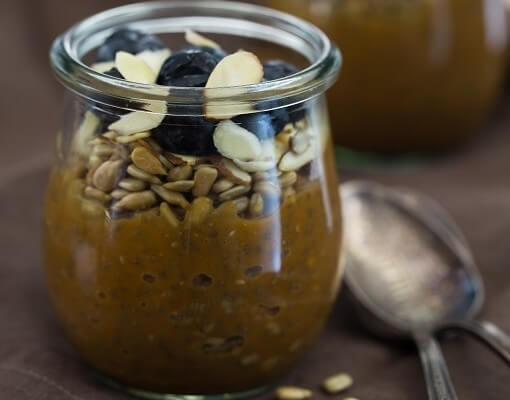
Pumpkin Chia Seed Pudding Recipe
This pumpkin chia pudding provides an assortment of essential nutrients that your body needs without including the unhealthy fats, salts, and artificial foods that most diets avoid. Additionally, it is both grain-free and vegan to meet myriad dietary restrictions.
Ingredients: Milk, pumpkin puree, chia seeds, maple syrup, pumpkin spice, sunflower seeds, sliced almonds, fresh blueberries.
Total Time: 10 minutes
| Yield: 4 servings
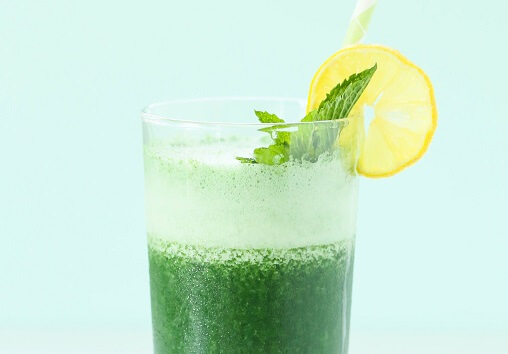
Spirulina Smoothie Recipe
This simple smoothie offers a light snack that is refreshing and nutritious. Replace your standard juices and drinks with this powerhouse of a beverage that includes the superfood spirulina to supply protein, fiber, iron, and vitamins A and C.
Ingredients: Spirulina, banana, fresh spinach, apple juice, crushed ice, lemon juice.
Total Time: 2 minutes
| Yield: 2 smoothies
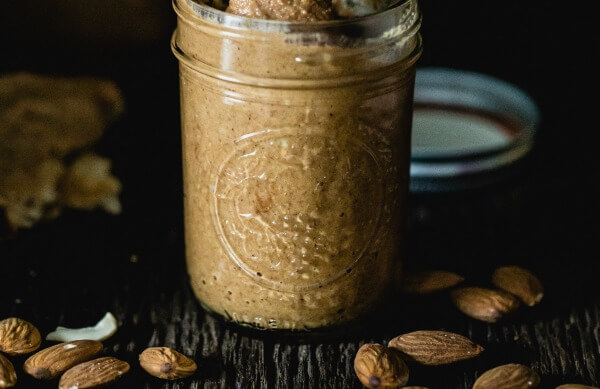
Almond Butter Recipe
A superb spread that can add protein and fiber to a light snack of raw fruits or veggies, this almond butter is a source of unsaturated fats, fiber, protein, and vitamin E as well as a rich, nutty flavor that pairs well with nearly any food.
Ingredients: Almonds, coconut oil, maple syrup, salt
Total Time: 45 minutes
| Yield: 2 cups
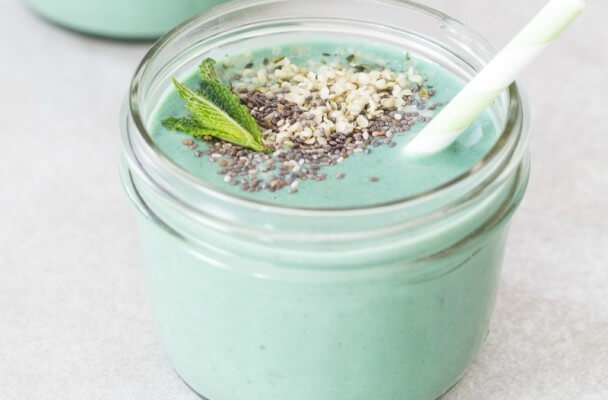
Protein-Packed Detox Smoothie Recipe {vegan}
Unlike the spirulina smoothie, this detox formulation is full of substantive seeds, herbs, and powders to offer enough of macronutrients to act as a meal replacement. Like the other options, this shake accommodates a wide range of diets due to its smart selection of whole ingredients.
Ingredients: Almond milk, frozen banana, spirulina, hemp protein powder (optional), fresh mint, chia seeds, hemp hearts.
Total Time: 5 minutes
| Yield: 2 servings
Healthy Snacks for Any Diet
It’s tough to find snacks that accommodate different diets, as many appear contradictory. Vegetarian diets, DASH diets, and countless others may suggest whole grains that are low in calories- while paleo and Atkins eschew these options. These snacks manage to find the ideal middle ground. Take a look at the list and try some of these healthy snacks today!
Healthy Eating
- Healthy Snacks
- Healthy Highlights
- 5 Uses for Cacao Powder
- 5 Ways to Eat Farro
- 6 Best Gluten-Free Foods
- Alcohol and the Body
- Almond Flour Recipes
- Anti-Aging Superfoods
- Beat the Afternoon Slump
- Benefits of a Plant-Based Diet
- Benefits of Baobab
- Benefits of Cashews
- Benefits of Coconut Oil for Hair
- Benefits of Coconuts
- Benefits of Dates
- Benefits of Fenugreek
- Benefits of Garcinia Cambogia
- Benefits of Goji Berries
- Benefits of Kale Chips
- Benefits of Monk Fruit Sweetener
- Benefits of Peanuts
- Benefits of Pecans
- Benefits of Pistachios
- Benefits of Pumpkin Seeds
- Benefits of Spelt Flour
- Benefits of Steel Cut Oats
- Benefits of Sunflower Seeds
- Benefits of Tiger Nuts
- Benefits of Turmeric
- Benefits of Walnuts
- Benefits of Wheatgrass
- Best Food Fads
- Cacao vs Cocoa
- Caffeine-Free Energy Foods
- Chocolate That's Good for You
- Diet vs. Exercise
- Fat Burning Foods
- Food Myths Debunked
- Foods for Bone Density
- Foods for Colon Health
- Foods for Healthy Hair
- Foods for Healthy Skin
- Foods to Help Sleep
- Foods to Reduce Stress
- Green Tea Benefits
- Healthy Baking Flours
- Heart Healthy Habits
- High Protein Health Risks
- How to Boost Your Metabolism
- How to Lose Weight While Aging
- How to Throw a Vegan BBQ
- Kaniwa vs Quinoa
- Little Health Foods
- Low-Carb: Fad or Friend?
- Making Healthier Desserts
- Mediterranean Diet Meal Plan
- Natural Beauty Products
- Nuts for Weight Loss
- Preparing Vegan Meals
- Preventing Muscle Degeneration
- Rare Superfoods
- Reduce Sugar Intake
- Save Time By Going Vegan
- Smarter Snack Swaps
- Smoothie Ingredients
- Soy Protein vs Whey Protein
- Starting a Plant-Based Diet
- Steel Cut vs Rolled Oats
- Sugar Substitutes
- Vegan Proteins
- Vegan Substitutions for Fall Recipes
- Why Go Vegan
- Healthy Meals
- Healthy Recipes
- Sports Nutrition
- Vitamins, Minerals & Nutrients

